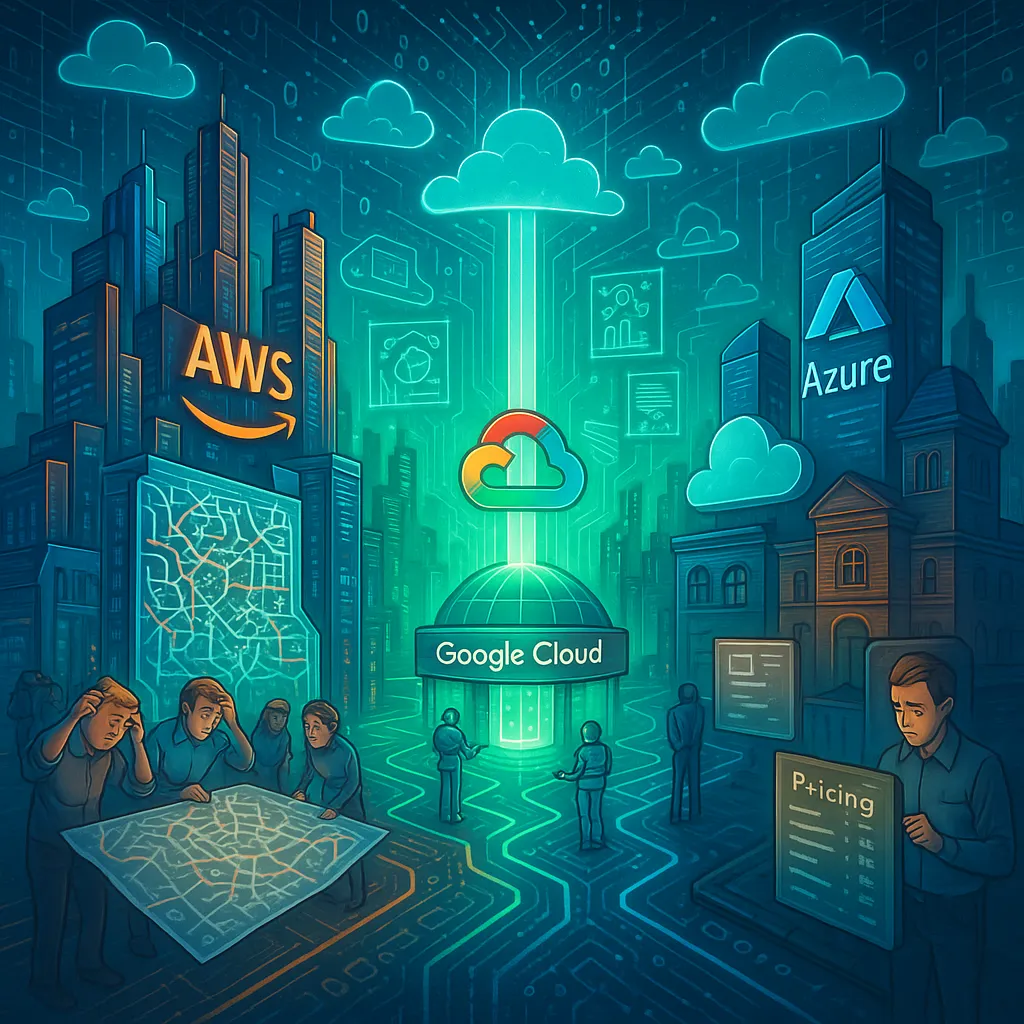Tel: 650-980-4870
Blog

Big 3 Public Cloud - Strengths & Weaknesses
Exploring the three major public cloud providers—Amazon Web Services (AWS), Google Cloud Platform (GCP), and Microsoft Azure— highlighting their strongest and weakest features based on their offerings and market perception as of the end of 2024.
Amazon Web Services (AWS)
Strongest Feature: Extensive Service Portfolio and Market Dominance
AWS stands out for its vast array of services and its position as the market leader in cloud computing. With over 200 services covering compute, storage, databases, machine learning, and more, AWS offers unparalleled depth and breadth. This extensive ecosystem allows businesses to build almost any solution imaginable, from simple web hosting to complex AI-driven applications. Additionally, AWS's early entry into the cloud market has given it a massive global infrastructure with numerous regions and availability zones, ensuring high reliability and scalability for enterprises of all sizes.
Weakest Feature: Complexity and Learning Curve
The flip side of AWS's extensive offerings is its complexity. The sheer number of services, coupled with a sometimes unintuitive user interface and intricate pricing models, can be overwhelming for beginners or smaller organizations without dedicated cloud expertise. Navigating the AWS Management Console and understanding cost structures often requires significant time and training, which can be a barrier to adoption for those new to cloud computing or with limited resources.
Google Cloud Platform (GCP)
Strongest Feature: Data Analytics and AI/ML Capabilities
GCP excels in data analytics and artificial intelligence/machine learning (AI/ML) tools, leveraging Google's expertise in these areas. Services like BigQuery for data warehousing, TensorFlow for machine learning, and AI Platform for building and deploying models are top-tier. GCP's infrastructure is optimized for handling massive datasets and real-time analytics, making it a preferred choice for organizations focused on data-driven decision-making or cutting-edge AI applications.
Weakest Feature: Smaller Market Share and Ecosystem
Despite its technical strengths, GCP lags behind AWS and Azure in terms of market share and ecosystem maturity. This translates to a smaller community of users and third-party integrations, which can limit support resources, tutorials, and compatible tools compared to its competitors. For businesses relying on a broad partner network or extensive community-driven solutions, GCP might feel less comprehensive, even if its core technology is competitive.
Microsoft Azure
Strongest Feature: Hybrid Cloud Integration and Enterprise Compatibility
Azure's strongest suit is its seamless integration with Microsoft's enterprise software ecosystem, such as Office 365, Windows Server, and Active Directory, alongside its robust hybrid cloud capabilities. Azure allows businesses to blend on-premises infrastructure with cloud resources effortlessly through tools like Azure Arc and Azure Stack. This makes it an ideal choice for organizations already invested in Microsoft technologies or those needing a hybrid approach to manage legacy systems alongside modern cloud deployments.
Weakest Feature: Regional Availability and Pricing Transparency
While Azure has expanded its global presence, it still trails AWS in the number of regions and availability zones, which can be a limitation for businesses needing ultra-low latency or specific geographic coverage. Additionally, Azure's pricing can be less transparent and harder to predict compared to competitors, with costs sometimes escalating unexpectedly due to the complexity of licensing and service tiers. This can pose challenges for budget-conscious organizations or those operating in underrepresented regions.
In summary, AWS offers unmatched breadth but can be daunting to navigate, GCP shines in data and AI but lacks the ecosystem depth of its rivals, and Azure dominates in hybrid and enterprise integration while falling short in global reach and pricing clarity. Each cloud provider caters to different needs, and the best choice often depends on an organization’s specific priorities and existing technology stack.
Menu
Services
© Copyright 2023. Optimal Outcomes. All rights reserved.
